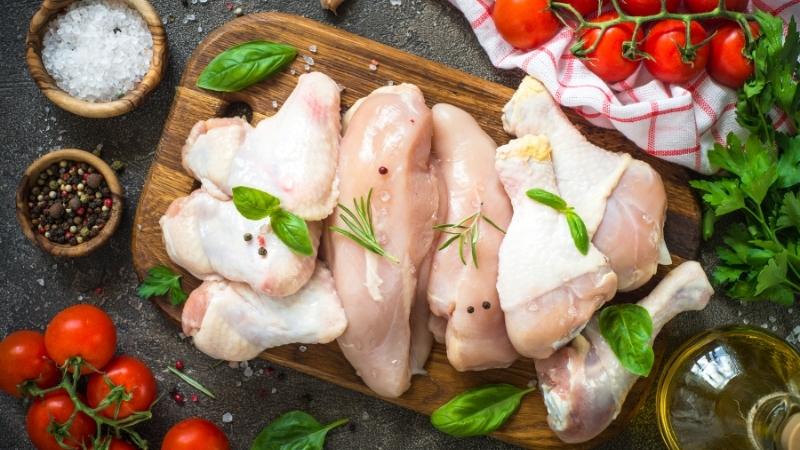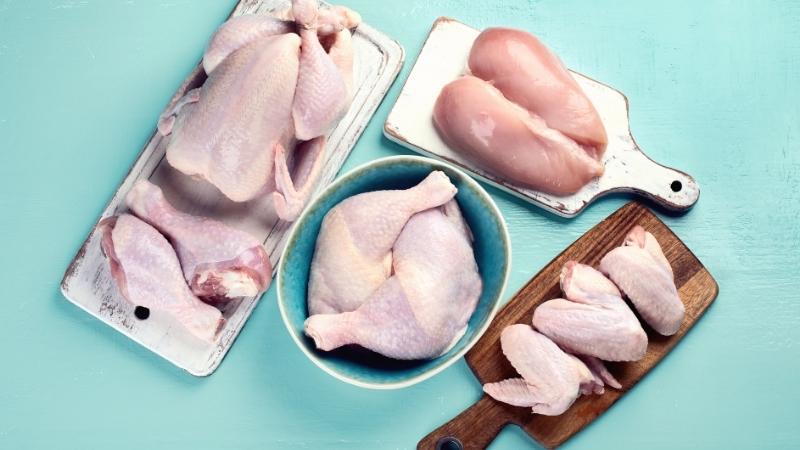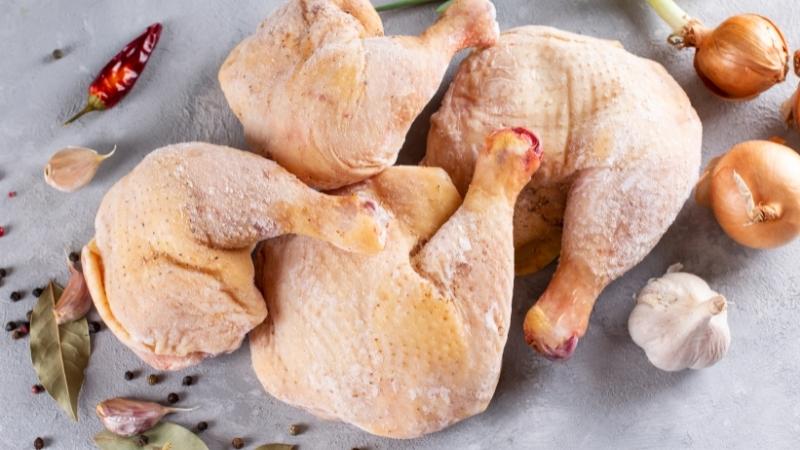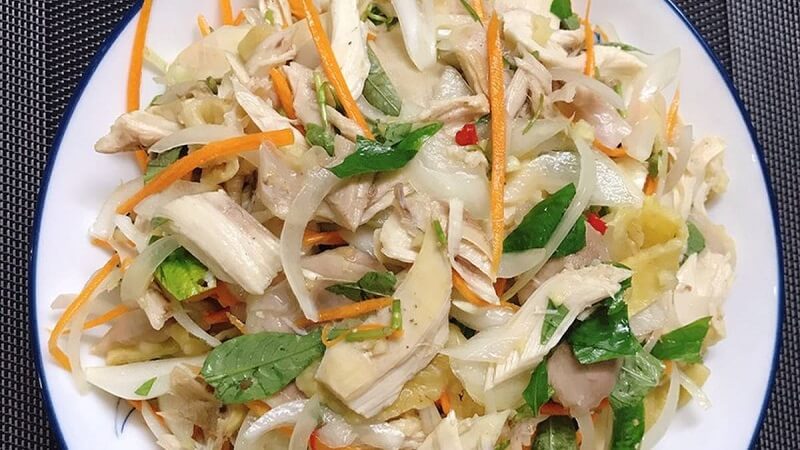Chicken is a popular dish in Vietnamese family meals, and it is also packed with nutrients. Chicken is a versatile ingredient that can be used to create a variety of delicious dishes such as chicken soup, braised chicken, and more, rivaling the flavors of pork and beef.
To prepare a flavorful chicken dish, the first step is to choose a good chicken at the market. However, this can be a challenging task for those who don’t frequently go grocery shopping. Don’t worry, as I will share some tips on how to select the best chicken for your meals.
1 Nutritional Value and Benefits of Chicken
Nutritional Value of Chicken
Chicken is a delicious and common type of poultry in Vietnamese cuisine. Each part of the chicken contains different amounts of calories and nutrients. Here is the nutritional content of various chicken parts:
- Breast: A 100g skinless and boneless chicken breast provides approximately 165 calories, 31g of protein, and 3.6g of fat.
- Thigh: A 100g chicken thigh contains around 209 calories, 26g of protein, and 10.9g of fat.
- Wing: In every 100g of chicken wing, there are 203 calories, 30.5 grams of protein, and 8.1g of fat.
- Drumstick: Each 100g of chicken drumstick provides approximately 172 calories, 28.3g of protein, and 5.7g of fat.
 Nutritional Value of Chicken
Nutritional Value of Chicken
Benefits of Chicken for Health
- Chicken is known for being high in protein but low in fat, making it ideal for those who want to build muscle or lose weight in the long term.
- Chicken is rich in tryptophan, an amino acid that increases serotonin levels in the brain. Regular consumption can improve mood and reduce stress.
- Additionally, chicken has been proven to prevent joint inflammation and bone-related diseases. Therefore, eating chicken soup or braised chicken can help alleviate joint pain.
- When consumed, chicken can block and control homocysteine, an amino acid that is harmful to cardiovascular health.
- Apart from these benefits, chicken also boosts the immune system, enhances metabolism, fights cancer, and promotes eye health, among other advantages.
 Benefits of Chicken for Health
Benefits of Chicken for Health
2 How to Choose the Best Chicken
Selecting Pre-packaged Chicken
Choosing Farm-raised Chicken
When it comes to farm-raised chicken, opt for those with light yellow, thin, and elastic skin, with deeper yellow spots on certain areas like the breast, wings, and back. Farm-raised chickens typically have a small, compact body and a narrow breast.
The meat should look fresh and have no foul odor, and the skin should be free from bruises or blood clots. Avoid choosing chickens that are darkly discolored, as these are likely to have died before processing.
 Choosing Farm-raised Chicken
Choosing Farm-raised Chicken
Press your finger into the chicken’s body, thigh, or drumstick to check for firmness. If the meat is firm, it’s a good sign, but if it’s soft, slippery, or deformed, it may have been injected with water or mixed with harmful substances, so it’s best to avoid purchasing such chickens.
Choosing Factory-farmed Chicken
The process of choosing factory-farmed chicken is similar to selecting farm-raised chicken, with the main difference being that factory-farmed chickens are larger, have more meat, and thicker skin.
For pre-packaged chicken sold in supermarkets, pay attention to the expiration date, and choose chicken that is at least one day before the expiration date to ensure freshness.
 Choosing Factory-farmed Chicken
Choosing Factory-farmed Chicken
Identifying Discarded Laying Hens
Apart from factory-farmed and farm-raised chickens, you should also be cautious of discarded laying hens. These are typically chickens that have passed their egg-laying prime and are then slaughtered and sold as meat.
These chickens tend to have low nutritional value, tough meat, and are not particularly tasty, hence their low price. However, since they resemble regular chickens, they can be challenging to identify.
According to a chicken supplier, one way to identify discarded laying hens is by their short beaks, especially the upper beak, which is shorter than the lower one. This is because, during their egg-laying period, these chickens often peck at each other, so farmers trim their upper beaks to prevent injury.
The skin of these chickens is usually thick and white due to their diet of industrial feed, rather than the golden hue of free-range chickens that feed on corn and rice.

Selecting Live Chicken
For Roosters
When choosing a rooster, look for one with bright red comb and wattle, alert eyes, and smooth, glossy feathers that lie flat against the body. The beak should be sharp, without any discharge.
The legs should be straight, thin, and yellow with a glossy sheen. The spurs should be short, as longer ones indicate an older bird.
Capon, or castrated rooster, is also a popular choice among home cooks for its tender meat, low fat content, and small bones.
 For Roosters
For Roosters
For Hens
For hens, look for those with bright red combs and wattles, yellow legs, smooth and glossy feathers, and small pores. Gently press the breast area; if it feels full and the bones underneath feel soft, it’s a young hen.
Avoid hens with hard, scaly legs, ruffled feathers, large pores, gray or white skin, and prominent anal openings, as these indicate older birds that have laid many eggs.
Additionally, check the anal area; it should be pink and contractile, without any signs of moisture, discharge, or abnormal droppings. There should be no red spots under the armpits, as these indicate water injection.
 For Hens
For Hens
Avoid buying chickens that show signs of illness, such as pale or bruised combs, droopy appearance, runny beak, lethargic eyes, drooping wings, tired demeanor, constantly lowered head, scruffy feathers, wrinkled skin, or dry legs, as these can affect the quality of the meat and your health.
3 Notes on Chicken Consumption and Storage
Notes on Chicken Consumption
- Individuals with open wounds, fresh surgical scars, or new tattoos should avoid eating chicken, as it can cause raised scars and delayed wound healing, as well as skin discoloration.
- People with liver cirrhosis should limit their chicken intake, as its warm nature can further damage the liver.
- Those with kidney stones are advised to refrain from consuming chicken, as it can increase oxalate levels in urine and promote stone formation.
- Chicken should not be paired with , as it can lead to bloating and constipation.
 Notes on Chicken Consumption
Notes on Chicken Consumption
Storing Chicken
The best way to store chicken for extended periods is to keep it in the refrigerator. Rinse the chicken, pat it dry, and place it in an airtight container or plastic wrap before storing it in the fridge. It’s best to keep it in the freezer to prolong its shelf life, and thaw it when needed, but avoid refreezing to maintain quality.
For cooked chicken, place it in an airtight container and store it in the refrigerator, separate from other foods to prevent cross-contamination and odor absorption.
 Storing Chicken
Storing Chicken
4 Delicious Dishes Made with Chicken
BBQ Chicken Rice
BBQ Chicken Rice is a flavorful and visually appealing dish that will surely whet your appetite.
The rice is infused with a perfectly seasoned sauce, and the chicken is tender and juicy, also coated in a mouthwatering sauce.
Reference:
 BBQ Chicken Rice
BBQ Chicken Rice
Salt and Pepper Chicken
If you’re looking for something new to do with chicken, try making Salt and Pepper Chicken! This dish has a unique preparation method and a delightful flavor profile.
The chicken skin turns a golden yellow, and the meat is chewy and incredibly fragrant, especially when paired with lemon leaves and served with cabbage salad.
Reference:
 Salt and Pepper Chicken
Salt and Pepper Chicken
Chicken Salad
During hot summer days when your taste buds need a refresh, try making a chicken salad! It’s a simple dish with easily accessible ingredients and a refreshing flavor profile.
The salad combines tender chicken, a tangy dressing, and various vegetables for a well-balanced and satisfying meal.
Reference:
 Chicken Salad
Chicken Salad
5 Our Store: The Best Place to Buy Chicken at Great Prices
If you’re looking for high-quality chicken at affordable prices, look no further than our store! Here, you will find fresh, delicious, and safe chicken with clear origins.
We also offer excellent customer service, competitive prices, and frequent promotions on a wide range of products.
Reference: Fresh and Delicious Chicken at Our Store
Now you have some tips and tricks to help you choose the best chicken for your meals without worrying about sick or
9 Delicious Recipes for Making the Best Fried Chicken
Discover the secrets of fried chicken perfection! If you’ve been dreaming of the perfect fried chicken dish, this is the guide for you. We’ve compiled our top tips so you can make restaurant-quality fried chicken in the comfort of your own home. Keep reading to learn more!






































